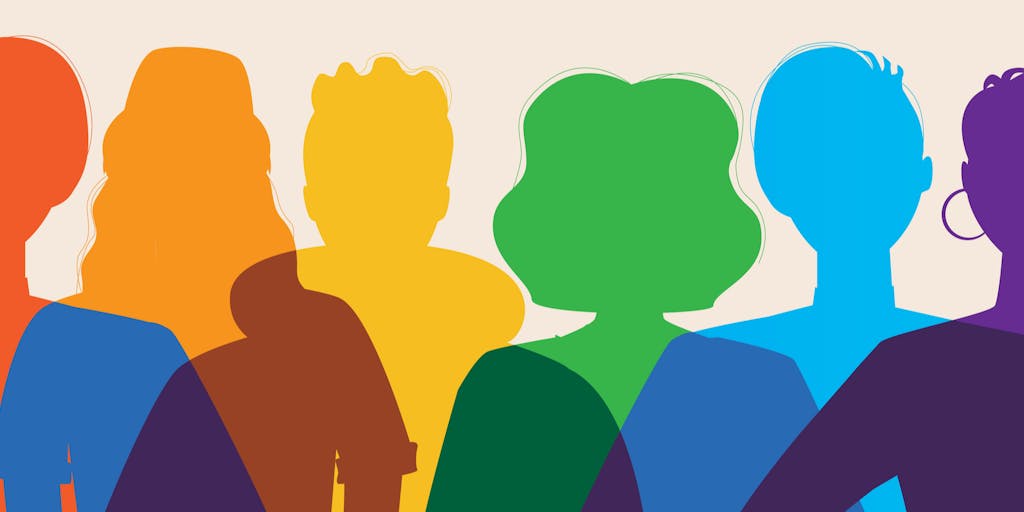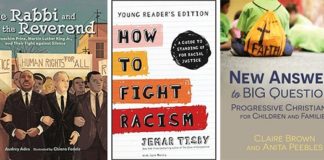
“Nobody peaks in 8th grade, and that’s okay.” It’s a phrase I often tell my students. It gives them the grace and permission to explore themselves during an arguably turbulent time of transition. I know this from my own experience in 8th grade. Braces, frosted tips, oversized clothes to hide insecurities with my body, and a cast on my right arm were a few of the awkward transitions I had to navigate.
The discomfort I experienced as a growing teenager was palpable, not to mention I was coming to terms with my identity as a gay pre-teen in a homophobic environment.
Withholding my identity consumed nearly every aspect of my middle school experience. I made up fake crushes on girls to appear straight, concealed the deepest parts of myself from my best friends, and hid during lunch while my classmates played “smear the queer,” a game where a mob of boys picked a “queer” who they chased and beat.
In 8th grade, going to school meant wearing a mask, a shield for survival way before it became a pandemic fashion accessory.
Eighth grade was also when took my first sex education course. It was filled with typical clichés of American sex education: horrifying pictures of sexually transmitted infections, an abstinence pledge, and a curriculum that sent the implicit message that only cisgender, heterosexual people exist. That was until my teacher casually said one sentence in the middle of class:
“You know, it’s gay men who often contract HIV, and it’s fatal.”
It shook my entire world. The one time in my K-12 education that a teacher discussed people like me, and the message was a death sentence. At this point, giving myself grace and permission was the least of my concerns.
When you’re 13 years old, teachers play a large part in shaping your understanding of the world. Unfortunately, the culture of silence about LGBTQIA+ people in my school left me with the impression that I was taboo or too irrelevant to get the same level of health information my cisgender, heterosexual classmates received.
My sex education teacher withheld lifesaving, medically accurate information about sexual health from my Queer classmates and me, perhaps intentionally or due to ignorance and misinformation.
It’s no wonder that schools often reinforce internalized homophobia and transphobia, a form of oppression where LGBTQIA+ people learn to fear or hate their true self, which can manifest in many ways, including shame, depression, stigmatization, and adverse health outcomes.
The erasure of Queer people goes against the tenets of sex education. As a sexual health and science teacher in Texas, a core component of my work has been to counteract this erasure. It has taken many years with minimal resources to develop Queer inclusive sex education, but pursuing this work is essential to ensure the health and safety of my students.
Creating Space for LGBTQIA+ Students
The state of sex education in most Texas public schools resembles many of the cliches seen in movies and television – that is, if a school even has the course. Many schools push abstinence-only programs, an approach with no substantial body of supporting evidence, and our health standards lack requirements about teaching consent. Moreover, much of our state relies on outdated pedagogy that often leaves students unprepared for the realities they already face as teens.
When I began my work as a sexual health educator, I knew I wanted to counteract these trends, even if it was just in my classroom. It has taken over a decade of research, training, trial, and error, and collaboration with my colleagues to develop a set of practices for inclusive sex education that we now employ. Here is what emerged:
- Cultivate a classroom environment and curriculum where students across the gender, sex, and sexuality spectrums feel seen and valued. Being cisgender and heterosexual is never presented as normative; all scenarios and examples include various gender and sexual identities. Gender, sex, and sexuality are introduced as expansive and not binary, existing along spectrums where students can self-identify.
- Provide lifesaving, medically accurate information aimed at equipping students with the knowledge and skills to protect their health and safety. For example, all students learn about PrEP (Pre-Exposure Prophylaxis), a once-a-day pill that is 99% effective at preventing HIV transmission. Additionally, we identify healthcare providers that provide LGBTQIA+ informed care and hear directly from Transgender people about the many facets of transitioning.
- Proactively counteract stigmatization for any students around identity. LGBTQIA+ identities specifically are validated, affirmed, and are shown to have biological and historical precedence. We discuss pronouns, hear from transgender, nonbinary, and Intersex individuals about what using chosen pronouns means to them, and practice what to do when you’re unsure how to refer to someone.
- Ensure that my colleagues share this same approach in their classrooms. For example, queer teachers take the lead in writing lessons that center LGBTQIA+ identities. In addition, teachers also use a student’s chosen name and pronouns, which drastically reduces depressive symptoms and suicide risk in transgender and nonbinary students.
Context Matters
As you might imagine, this approach is often met with resistance, especially in a state like Texas.
In 2020, Texas voted against any form of LGBTQIA+ inclusive policies during the sex education standard revisions. Texas is also a “No Promo Homo” state and one of six states that still have a provision preventing sex education teachers from speaking positively about homosexuality. This provision requires us to describe it as opposing public opinion and public health perspectives, in addition to being a misdemeanor (which it isn’t).
Even within my school, there are times when families and community members do not share the same perspectives as our faculty. It is not lost on me that this work may feel impossible for educators in other districts and school settings.
When I began my teaching career in Mississippi, the county my students lived in had one of the highest rates of HIV transmission in the state. After I learned about this startling statistic, I asked my principal if I could teach a lesson about disease transmission in my science class. Ultimately, my principal rejected the proposal because the topic was “too close to home” for some of my students, and Mississippi has a law preventing the instruction of proper condom use.
Unfortunately, my students would go through their entire K-12 education without a single-sex education class, leaving most ill-equipped to protect the health of themselves and their sexual partners.
In the case of Texas and Mississippi, and other states that seek to enact harmful legislation that inhibits our students’ development, this context underscores the urgent need for inclusive curriculum and teaching practices in sex education.
Moving Towards Inclusion
Recently, a male student asked me for makeup remover wipes because he worried about getting in trouble for wearing makeup at home. When I asked him why he wanted to put makeup on at school, he said, “I knew I could just be myself here.” In that passing moment, he gave me a powerful reminder that educators can create spaces where students can feel liberated.
LGBTQIA+ inclusive sex education has made a significant impact on my students. Over the years, many of my 8th graders entered my classroom with negative perceptions and stereotypes about LGBTQIA+ individuals. Phrases like “no homo,” “that’s so gay,” and other homophobic slurs are often heard early in the year. But after progressing through my class, something funny happens: the jokes stop.
My students start asking questions because they want to learn more, and Queer students write me notes saying that they finally feel safe enough to come out to their friends. Why does this happen, and what causes this change? Being Queer is no longer something to fear or ridicule because they better understand LGBTQIA+ experiences and identity.
Educators: you have LGBTQIA+ students in your classroom right now. They shouldn’t have to come out or be left without a vision for navigating sex and society to remind us of the necessity of this work. The humanity, health, and dignity of our LGBTQIA+ students are sacred, and it’s time we treat them like that.







